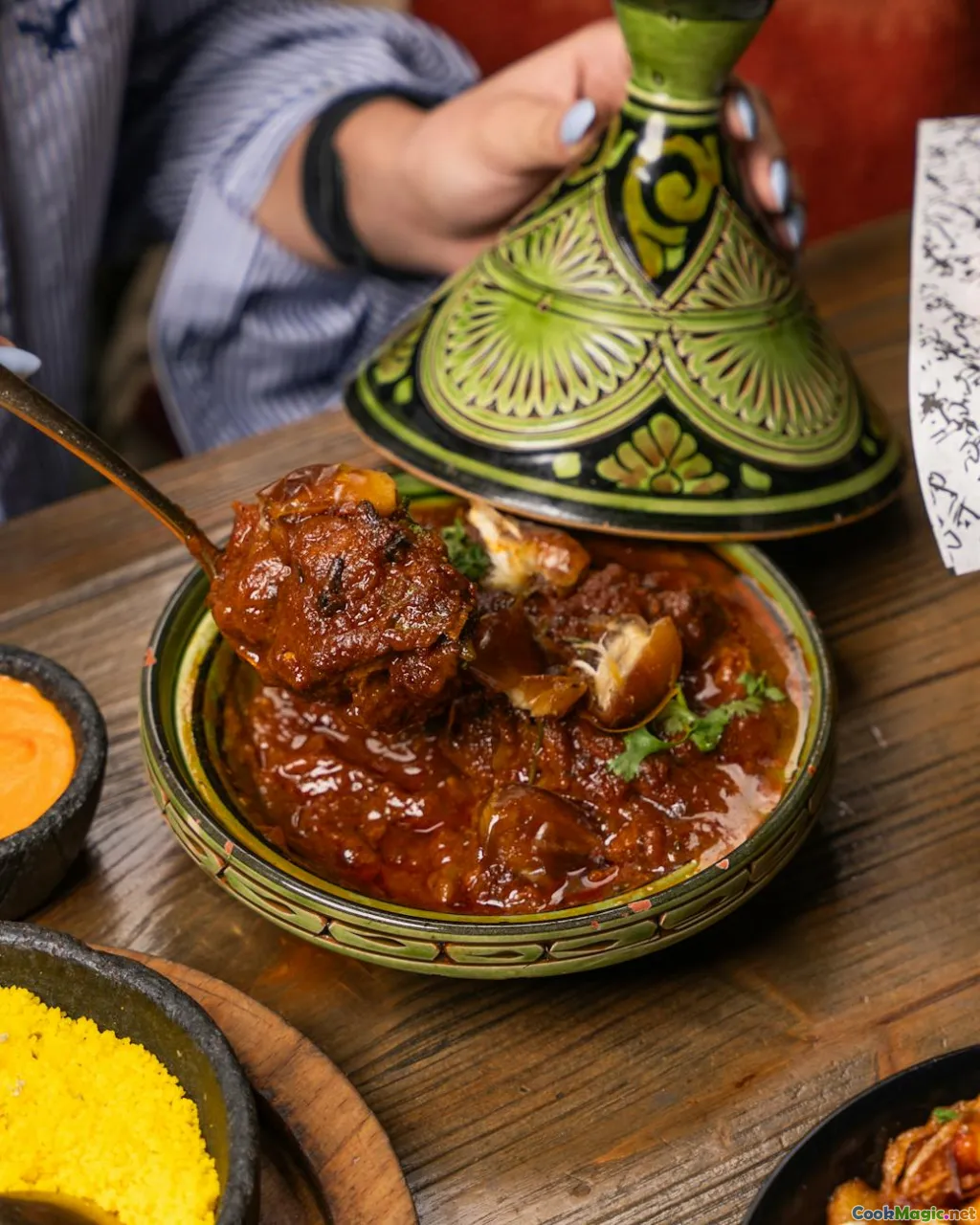Mastering the Art of Authentic Moroccan Tagine Stews
8 min read Discover the rich flavors, cultural significance, and techniques behind crafting authentic Moroccan tagine stews that captivate the senses. June 16, 2025 18:05
Mastering the Art of Authentic Moroccan Tagine Stews
Imagine a dish that embodies the soul of Moroccan hospitality—aromatic, warm, and bursting with layers of flavor that tell stories of centuries past. The Moroccan tagine is more than just a stew; it’s an experience, a ritual, a cherished tradition passed down through generations. As the aroma wafts through bustling markets and cozy kitchens alike, it beckons you to slow down, savor, and connect with a vibrant culinary heritage.
Introduction: The Mystique of the Tagine
In the heart of Morocco, the tagine is both a cooking vessel and a culinary philosophy. Named after its distinctive conical lid, the tagine is a clay or ceramic pot designed to create a unique cooking environment—one that marries moisture, heat, and aroma into a symphony of flavors. In Moroccan households, preparing a tagine is an act of love, patience, and artistry.
The allure of the tagine lies in its ability to transform humble ingredients—meat, vegetables, fragrant spices—into a tender, flavorful masterpiece. It’s a slow-cooked marvel, often simmered for hours, allowing flavors to meld and develop depth that’s impossible to replicate with quick cooking methods.
Historical and Cultural Significance
The origins of the tagine date back to ancient North Africa, with roots deeply embedded in Berber, Arab, and Andalusian traditions. Historically, the clay vessel was an ingenious solution for cooking over open fires in arid terrains, conserving heat and moisture. Over centuries, it became a symbol of Moroccan hospitality, often prepared during communal gatherings, festivals, and family celebrations.
Moroccan cuisine is renowned for its intricate spice blends—ras el hanout, saffron, cinnamon, ginger—that elevate the humble stew into a sensory experience. The tagine’s ability to encapsulate these flavors makes it a culinary ambassador of Moroccan culture, showcasing its rich history and diverse influences.
The Art and Technique of Making a Perfect Tagine
Selecting the Right Ingredients
The foundation of an authentic Moroccan tagine is quality ingredients. Traditionally, a mix of tender meats such as lamb, chicken, or beef is used, often paired with seasonal vegetables—carrots, potatoes, zucchini, preserved lemons, and olives. For vegetarian versions, hearty legumes or root vegetables shine.
Spices are the soul of the dish. A balanced blend of ras el hanout—a complex mix of over 30 spices—along with saffron, cinnamon, turmeric, and ginger, creates an aromatic base that defines Moroccan flavor profiles.
The Preparation Process
- Marination: Many Moroccan recipes call for marinating meat in spices, garlic, and olive oil for several hours or overnight. This step deepens flavor and tenderizes the meat.
- Layering Flavors: Start by sautéing onions, garlic, and spices in olive oil to release their fragrant oils. Add meat and brown it evenly.
- Adding Liquids and Aromatics: Incorporate broth, preserved lemons, olives, and sometimes dried fruits like apricots or prunes, which add sweetness and complexity.
- Slow Simmering: Cover with the conical lid and cook on low heat for 1.5 to 3 hours. The slow cooking process allows the flavors to meld beautifully, and the meat becomes melt-in-your-mouth tender.
The Role of the Tagine Vessel
The distinctive conical lid is not merely decorative; it’s a genius design that traps steam, circulating moist heat to cook ingredients evenly. As the dish cooks, condensation trickles down the cone, returning moisture to the stew, resulting in tender, juicy meat and perfectly cooked vegetables.
Tips for Mastering Moroccan Tagine
- Use authentic clay or ceramic tagines for the best flavor and heat distribution. If you use a modern metal pot, mimic the effect by using a tight-fitting lid.
- Pre-soak the clay vessel in water before cooking to prevent cracking and enhance moisture retention.
- Adjust spice levels according to your preference. Moroccan cuisine balances heat and sweetness—don’t be afraid to experiment.
- Incorporate preserved lemons and olives for that signature tang and briny depth.
- Patience is key—slow cooking yields the most authentic and flavorful results.
Personal Insights and Cultural Anecdotes
Having traveled extensively across Morocco, I’ve had the privilege of witnessing how deeply the tagine is woven into everyday life. I remember visiting a small village in the Atlas Mountains, where an elderly woman patiently prepared a lamb tagine with apricots and almonds over an open fire. The air was thick with the scent of cinnamon and cumin, and her stories about each ingredient added layers of meaning to the meal.
In Marrakech’s bustling souks, I watched vendors craft their own clay tagines, each with unique patterns and glazes—testaments to regional artistry. Sharing a meal around a communal tagine pot with locals, I learned that this dish isn’t just about food; it’s about community, tradition, and hospitality.
Variations and Modern Twists
While traditional recipes are revered, contemporary chefs often experiment with ingredients. Vegetarian tagines featuring chickpeas, eggplant, and seasonal vegetables have gained popularity. Fusion styles incorporate elements like harissa for heat or fresh herbs for brightness.
Yet, the essence remains the same: slow-cooked, aromatic, and soul-satisfying. Whether you stick to classic recipes or explore modern interpretations, the goal is to capture the heart of Moroccan culinary wisdom.
Final Thoughts: Embracing the Tagine Experience
Mastering the art of Moroccan tagine is more than a culinary challenge—it’s an invitation to immerse yourself in a rich cultural tradition. It’s about patience, respect for ingredients, and an appreciation for slow, deliberate cooking that nurtures both body and soul.
So, gather your spices, select your ingredients, and prepare to embark on a journey through the vibrant flavors of Morocco. The ultimate reward is a dish that not only tastes divine but also connects you to centuries of history, community, and the timeless art of slow cooking.
Bon appétit, and may your tagines always simmer with authenticity!









